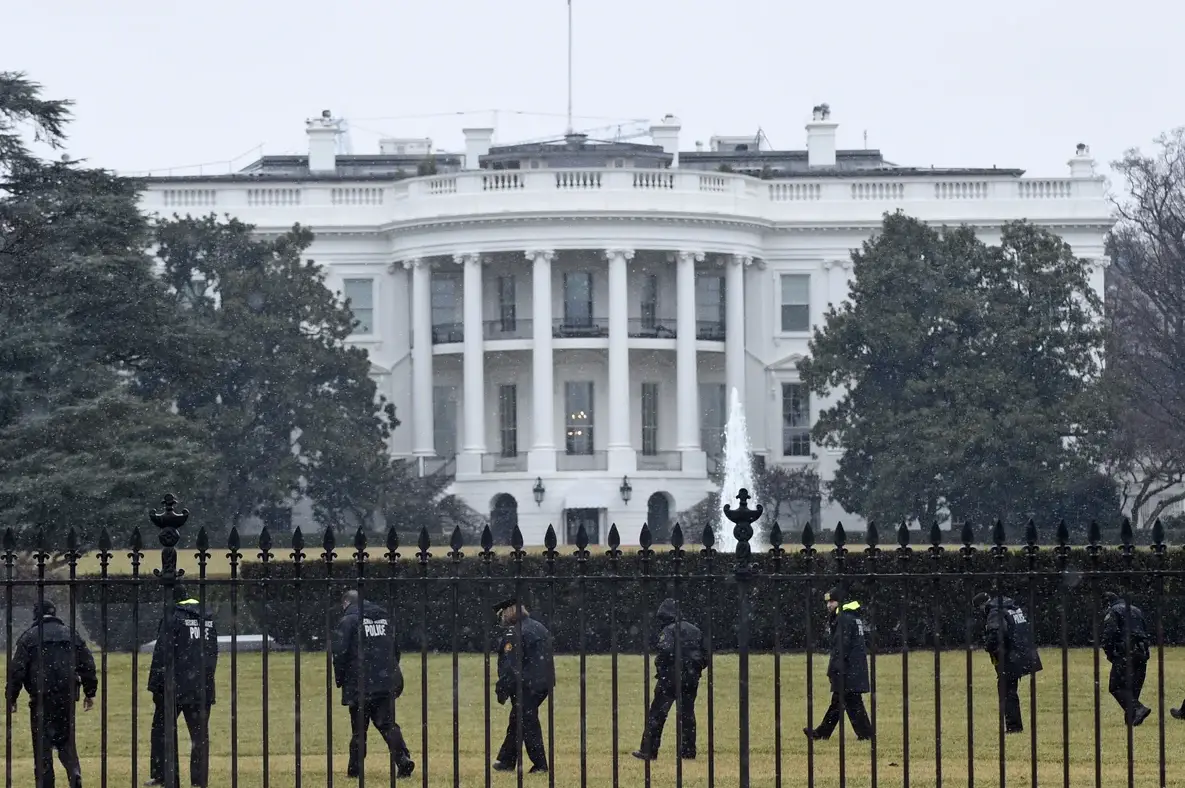In a startling incident that has once again drawn attention to the nation’s top security agency, the U.S. Secret Service swiftly intervened on the South Grounds of the White House on February 3 at approximately 4:20 p.m., arresting a man who scaled an outer fence. The dramatic scene was captured on video by witness David Stanley, whose post on X (formerly Twitter) quickly went viral. In the footage, the suspect can be seen passing by, yelling “F*** it,” as he begins climbing the fence, prompting an immediate response from the agency.
According to reports, rooftop snipers were seen darting across the premises and K9 units raced onto the lawn as Secret Service officers closed in. The intruder was taken into custody shortly thereafter. At this point, his identity remains undisclosed, and it is unclear what charges, if any, will be brought against him. The swift and forceful reaction by the Secret Service is a stark reminder of the stringent protocols in place to protect the 18-acre White House complex—a site guarded by mission support staff, uniformed officers, and special agents using cutting-edge security measures.
In response to the breach, the Secret Service has announced that it will conduct a thorough review of its protective operations, examining every aspect of the incident—from the timing and coordination of the response to the effectiveness of the security measures employed. While the immediate threat has been neutralized, the incident raises questions about vulnerabilities in one of the nation’s most secure facilities.
This latest breach is particularly concerning given the backdrop of a previous independent review panel that criticized the Secret Service for “deep flaws” in its operations. That panel, which investigated an attempted assassination at a Trump campaign rally in Butler, Pennsylvania, highlighted systemic issues that, if left unaddressed, could jeopardize the safety of government officials and the public alike. The review panel’s findings pointed to a “troubling lack of critical thinking” among some Secret Service personnel, as well as a failure to clearly delineate who holds security ownership over a protectee’s site.
Did someone try to jump over the White House fence?pic.twitter.com/JPyTdgLJR6
— Community Notes & Violations (@CNviolations) February 4, 2025
In a scathing letter, the panel called for “fundamental reform” of the agency, recommending the appointment of new leadership with experience outside the traditional federal structure to steer the Secret Service back to its core mission of protecting American leaders. The panel noted that the previous administration’s handling of security, particularly during the Butler incident, left much to be desired and warned that without urgent reform, similar failures could recur.
Adding fuel to the fire, President Donald Trump recently nominated Sean Curran—head of his personal Secret Service detail—to serve as the new director of the U.S. Secret Service. Curran, praised for his quick thinking during a previous assassination attempt on Trump, is expected to bring a new level of discipline and focus to the agency. Trump lauded Curran’s appointment on Truth Social, calling it an “honor” and emphasizing that the move is a step toward restoring the integrity and effectiveness of the Secret Service.
The contrast between the agency’s recent missteps and the bold changes proposed by Trump’s administration could not be starker. While the incident on February 3 highlights potential security lapses that leave the White House vulnerable, the response from both the Secret Service and the new leadership aims to signal that no such breach will be tolerated in the future. As the DOJ and the Secret Service review protective operations, questions remain about whether these measures will be enough to prevent similar incidents and restore public confidence.
Critics argue that the incident underscores a broader pattern of vulnerability in federal security protocols. “It’s alarming that such a breach could occur at the White House, and it raises serious questions about our national security,” one observer commented. Others have noted that the incident may be symptomatic of deeper, systemic issues within the agency that require sweeping reform—issues that the independent review panel has already brought to light.
As the investigation into the breach unfolds, many in the political and security communities are watching closely to see how the administration will respond. The upcoming review of security procedures could lead to significant changes in how the Secret Service operates, potentially involving new training protocols, upgraded technology, or even a restructuring of command to ensure that such lapses do not happen again.
Trump taps Sean Curran, the agent who rushed on stage during Butler assassination attempt, to lead Secret Service https://t.co/wRE9QBdVbm pic.twitter.com/NQ2bTChm4p
— David Lester Straight (@DavidLesterr_) January 23, 2025
In the meantime, the arrest of the man who scaled the fence has reignited debates about the effectiveness of current security measures and the need for continuous improvement. With the White House under constant threat, the administration’s actions in response to this incident will be critical in determining whether confidence in America’s most elite protective agency can be restored.
